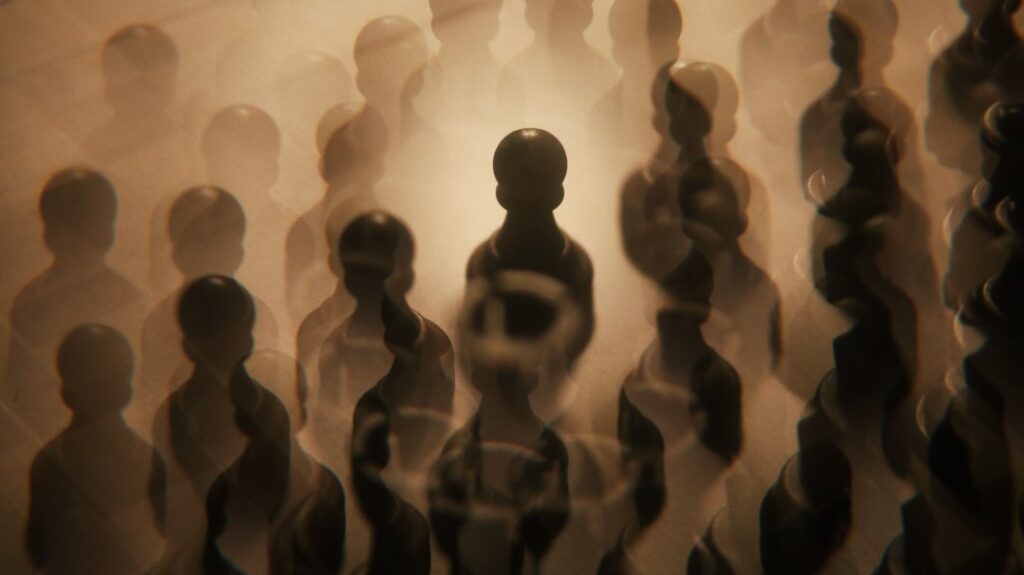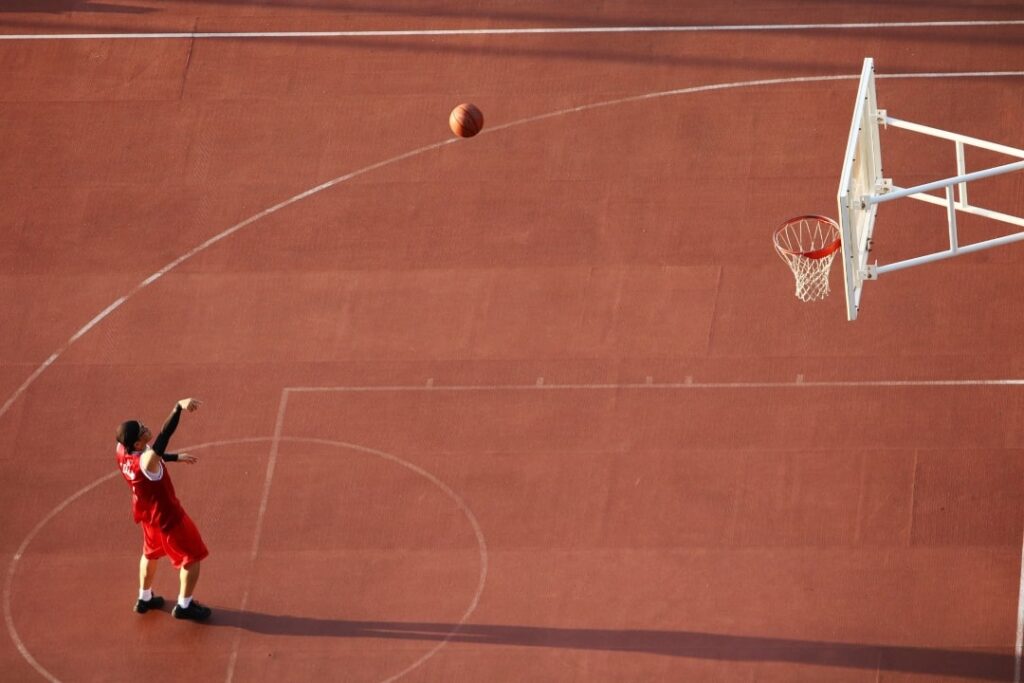A lot of readers ask me how they can improve their visualization skills. Honestly, for a long time, I did not have a better answer than “just train chess and you’ll get better at visualization”.
Now I’m very happy to share a guest article with you that will answer this question more in-depth and precisely.
Aiden Rainer shares his insights on getting rid of the so-called ‘fog’ when calculating chess lines. Aiden’s own Chess-blog & training program ‘Don’t Move Until You See it‘ focuses exclusively on improving visualization. So he is the perfect person to write this article.
I’ve thoroughly enjoyed reading about his method and am excited to use some of it with my own students in the future.
If you want to get in contact with Aiden, just check out his homepage.
If you instead want some more of my own articles, check them out here or subscribe to my weekly Newsletter below.
Enjoy!
Note that after his article resonated so well with my readers, Aiden and I started an affiliate partnership. Links to his website are affiliate links and I will earn a provision if you end up his student.
The 4am Fog on the Backroads of My Home
When I finished high school, I spent a year working at the local chicken farms. But my strongest memories have nothing to do with the chickens themselves.
They’re about the fog.
The deep, hostile, creeping fog. And the horrible feeling of driving through it at 4am. The fog created an opaque wall around my car, moving with me but never breaking.
I couldn’t see anything ahead. I had no idea what was coming. I would have no time to react to anything should it occur. What little I could see was blurry and indistinct. It was impossible to tell for sure what was there. There could be a kangaroo, a deep pothole, or another car. Each enough to cause a major accident.
By the time I saw the threat, it would be too late to stop it. I couldn’t see what was coming. I would have no time to react. It’s a feeling of helplessness, knowing you don’t have all the information, that the fog is stopping you from making decisions you can trust.
You just have to go with your gut and hope it works out. Fingers crossed.
The Fog In Chess
I recognized the feeling when I sat at a Chessboard. I felt the same sense of struggling to make out anything ahead of me. I would try to calculate the consequences of a move, but there was the fog, obscuring everything ahead. I felt the lack of clarity of what was right in front of me. I hung pieces in one move. I missed the simplest things. It made me helpless. Reactive.

By the time I saw a threat, it was too late to do anything about it. I just had to go with my gut, and hope it worked out. Fingers crossed. We don’t have to accept the fog in our Chess. We can train ourselves to pierce through it. When we fight it back and can see with clarity, well into the distance, the impacts on our Chess are astounding.
We need to train our visualization.
There isn’t much mainstream discussion on visualization training techniques. The general story I’ve heard is your visualization skills will improve passively as you do. You’ll eventually get good at it by training other things. Why leave such an important skill up to time and chance?
But when we flip the script, magic happens. When we actively train our visualization, every other part of our Chess improves as well. The mental fog holds most Chess players back. Today, I’ll show you a new, powerful way to remove this limitation from your own game. But first, I need to explain something.
Rapid Skill Acquisition: Isolate and Intensify
I’m a learning addict. I love the thrill of learning new things and acquiring skills at speeds faster than you’re “meant to”. I get incredible satisfaction when I notice I can do something new. It’s intoxicating. Over the years, I’ve cobbled together a methodology for learning. I apply it in every new situation. It’s unorthodox, and takes me in some strange directions, but it never fails.
I’m going to focus on one key principle from my methodology. You’ll want to capture this somewhere.
For rapid improvement, we must isolate and intensify our target skills in our training.
To translate this for our visualization training, it means two things:
- we need to train in a way that separates the skill of Chess visualization from other parts of the game; and
- we need to train visualization at an intensity higher than we would ever need in an actual game
When you’ve done these two things, improvement comes swiftly.
Learn From Other Sports
You can see the theme of Isolate and Intensify throughout all high-performance fields. Especially in sports. It’s important that a basketballer is good at 3-point throws. So they focus on it.
They don’t hope they’ll somehow get better at three-pointers by playing games. They practice actively. They stand on the three-point line (isolate) and do throw after throw after throw, aiming for massive streaks (intensify).

It’s way easier to hit one 3-pointer in a game than it is to hit the massive streaks they’ve been working on in training. Compared to those streaks, hitting one is easy. So they (generally) do it with ease.
In Australian Rules Football, there was a full-forward for Collingwood named Travis Cloke. He struggled to score goals when the crowd was too full and loud. The noise would psyche him out. So he recorded crowd noise and listened back to it for hours and hours (isolate), far louder than it would be on the field (intensify).
When Travis was in an actual game, the crowd noise was so much quieter and less intrusive than in his training. Dealing with it became simple. And his game improved as a result.
Isolate and intensify. This is the secret to improving our visualization.
Training “Blindfolded” To Improve Visualization
In my research and experimentation, I kept running into the idea of Blindfold Chess. In the few relevant interviews I could find with top players, Blindfold Chess came up again and again as the best way to train.
Blindfold Chess is one of the coolest skills in Chess. Most players are in awe of the few that can do it well. It’s an amazing skill. But it’s not good training.
The only real problem is Blindfold Chess is freakin’ hard. For most Chess players, it’s practically impossible. You need a certain level of visualization skill to even attempt it. Otherwise, you’ll never get past the first couple of moves. It’s like having to pass a strength test to enter the gym – it’s not all that helpful.
Blindfold Chess makes us use our visualization skills in a way that is far more difficult than we’d ever need in a game. That’s a good thing – it’s intensifying visualization. But we still need to play a full game of Chess, juggling everything we would normally need to juggle. It’s just a million times harder because we can’t see anything.
We need to take it a step further. We also need to isolate visualization, removing all the decisions from Blindfold Chess. We need to train at the same level of intensity, but in a way that allows us to focus on visualization alone.
The answer is Chess audio. Recorded audio of games read aloud. It sounds simple but it’s so powerful. It’s always the simple ideas that are the most effective.

How to Supercharge Your Visualization with Audio: A Step-By-Step Guide
For simplicity, I’ll break this section into two.
How to Record Your Chess Audio:
(In case you aren’t in a position to record anything right now, I’ve prepared an audio game for you to use here.)
1. Prepare an audio recording device of some kind (I started with the Voice Memos app on my iPhone)
2. Go to chessgames.com and find a game that lasts up to 15 moves (or longer if you’re more advanced). Here’s a filtered search I’ve prepared. Pick one of those games, but don’t spend much time looking at the game before the next step.
3. Record yourself reading the moves out loud one by one. Leave 1-3 seconds of silence between each move. The silences between moves will give your brain a chance to picture everything. Err on the side of longer silences than you might need. It’s better to have extra time between moves than to feel rushed in your training.
Note: be sure to include turn numbers and the extra details (like checks and promotions).
How to Train with Your Chess Audio:
When you have your Chess audio file recorded and ready to go (or you’re using my example one), it’s time to get to work! Set aside at least 10 minutes for this exercise. We’re going to listen through the audio file, attempting to follow each move on our mental board as we hear it.
With each move made, we need to be able to answer the following questions:
- What did the last move do?
- Did the last move attack or defend anything?
- Did the last move open up any sightlines for other pieces?
- What are the threats in the position?
Make sure to take your time and work to see each position with total clarity in your mind. When you lose track of the position (and you probably will, there’s no shame in that), start the recording again from the beginning. Each time you repeat it, you’re creating a clearer picture and improving your skills.
Repeat this over and over until you either reach the end or at least 10 minutes have gone by. Remember, this is hard. It’s meant to be hard. We’re isolating and intensifying the skill of visualization. This challenge is what will give you rapid results!
It’s not success that matters here, but effort. It’s not your goal to complete the exercise. Your goal is to keep *trying* to complete the exercise! Do you see the difference?
I’ll let you in on a secret. I failed a lot when I first did this. Like the optimist I am, I recorded a 25-move game for my first attempt. It seemed like a hard-but-doable number at the time for some reason. I lost track of the position before the end of move 2. But then I tried again, and managed to reach move 3! Then 4. Then 5. Then 7!
It felt like a failure because I couldn’t get to 25. But without realizing it I had more than tripled the number of moves I could track in my head! And I felt the impact in my Chess immediately. You will too. It doesn’t matter if you get to the end, only that you keep improving.
How to Use Your Visualization Training in Your Games
When I first did this exercise, I couldn’t believe the impact on my Chess. I could see the board in front of me in sparkling clarity and was spotting tactics in positions further ahead than I’d ever been able to go.
It’s like my brain was saying, “you had me tracking the whole board without any visual reference, and now I can see a board and you only need me to remember the knight is there and the pawn is there? Easy peasy!”
But this stuff isn’t magic. One session of this training won’t make you a visualization god. You need to work on these skills regularly for lasting improvement.
Here are a few tips I’ve collected from teaching this method for the better part of the last two years. These will help you maximize the benefits of the method.
Start every Chess session with 10-minutes of visualization training
After spending 10 minutes training your Chess visualization with this audio method – you’ll feel it when you do it – your brain feels full. Stretched to capacity. And it makes any visualizing you need to do in your playing or studying easy by comparison.
This is a powerful state to be in. In this state, you have prepared your mind to, as a WFM who uses my method put it, “calculate like a madman”. This will enhance every other aspect of your Chess.
Whenever you make a move, say the move in your head
If you’re playing a game of Chess and move your knight to c3, say “knight c3” in your head. You want to get comfortable thinking of the board and your moves this way. It will help your brain connect and use the skills you’ve developed with audio-based training. It also does a bunch of other things.
There’s a reason every Grandmaster can rattle off moves as well as they can speak their native language (sometimes better!).
Play games against yourself in your head
This is a perfect way to practice throughout the day. When you find yourself with little pockets of time, don’t reach for your phone! Instead, try to play both sides of a Chess game in your head. The best part? You always win!
Pro tip: if you find yourself rehashing opening theory you’ve memorized, start the game with a crazy move (like 1. c3) and go from there. This will be tricky to start, but keep at it.
The Fog Retreats
When we take control of our visualization training, we can feel the fog retreating. Playing Chess unhindered by the fog makes for a completely different experience. You become less reliant on the things you’ve memorized. You will spot mistakes faster and avoid many of your own.
But, for me, the best part is this skill frees you to explore unhindered. There were mornings, on the drive to the chicken farms, that the sky exploded with a brilliant, beautiful sunrise.

I like to imagine those colors were there on the foggy mornings too, on the other side of those dark, low clouds. All those gorgeous sunrises, swallowed by fog.
So it brings me joy to know, when there’s an opportunity for beauty in my Chess, I don’t have to let fog stop me from experiencing it. And, with some work, you won’t have to either.
To go deeper into any of these ideas and learn about Don’t Move Until You See It, you can get my free Master Skill Series here.